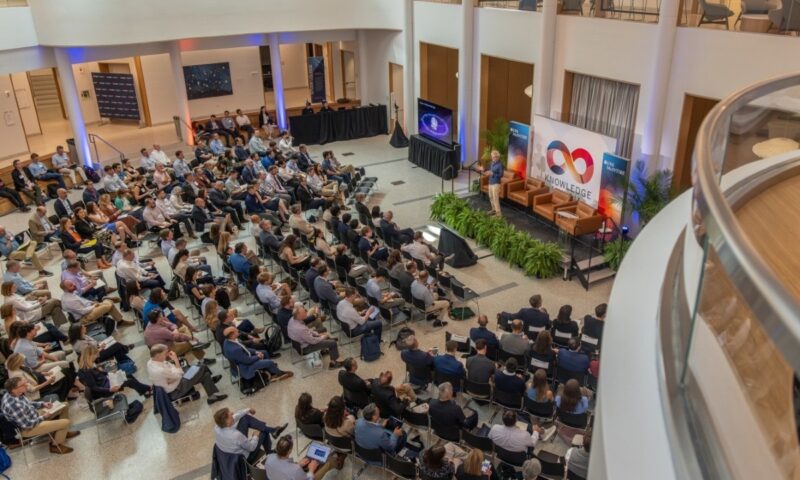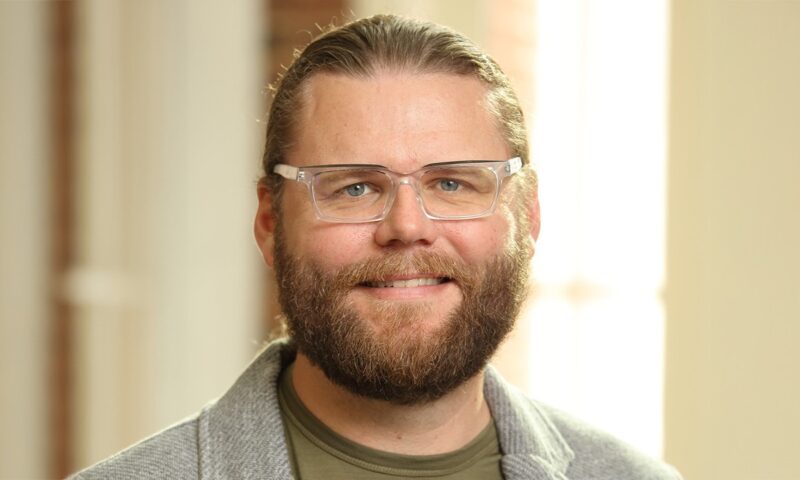The curriculum at the University of Virginia McIntire School of Commerce’s M.S. in the Management of IT covers a wide range of topics during the one-year program, but one key theme is a constant throughout: digital transformation.
The term itself has been around for some time, says Professor Ryan Nelson, Murray Research Eminent Professor of Commerce and Director of McIntire’s Center for the Management of Information Technology (CMIT), noting that it simply refers to how companies use technology to drive change in their businesses. However, digital transformation tools and trends are constantly evolving as tech changes. Students who come to UVA to take their careers and organizations to the next level with the M.S. in MIT graduate program, who typically have 10-12 years of work experience—though some have less and others have much more—are looking to stay fluent in business tech trends in order to bring value to their organizations.
The M.S. in MIT curriculum, which includes four modules, prepares students to lead digital transformation efforts with sections on enterprise architecture, project and product management, a module explicitly focused on digital transformation, and a final piece on IT strategy.
Every module offers insight about digital transformation challenges and opportunities, Nelson says. The module on enterprise architecture concentrates heavily on the modernization of digital systems, which is necessary to build a strong technical foundation for any digital transformation effort. The module that Nelson directs on project and product management also accounts for changes in tech and digital transformation trends.
For example, Nelson says that recent years have seen companies transitioning from a project-oriented approach to a product-oriented approach, mirroring a shift that began in Silicon Valley roughly 15 years ago.
After the success of companies like Google, Amazon, and other major tech organizations that have shifted their philosophy, “project management—which has a defined start and stop point—has really been giving way to a product mindset,” Nelson says.
“The product management approach is much more customer-centric and agile, with development teams continually focused on the product and the end-to-end customer experience,” he says. Teams do not simply finish a development project and move on; they stay with a product and work continuously on upgrades and improvements, while other teams tend to other products.
“Professor Ryan Wright and I did a case study on CarMax—the largest used-vehicle retailer in the United States.” Nelson says. “Following their transformation, CarMax now has over 60 interdisciplinary product teams dedicated to improving the customer experience throughout the life of their digital products. Prior to their transition, traditional project teams would develop an app and then move on to their next project.”
That shift from project to product, while significant, represents only one example of digital transformation, he says. To prepare students for both orientations, Nelson dedicates part of his module to project management and then pivots to product management.
“That starts to get us into digital innovation concepts as well,” he explains. “Digital innovation is about transforming processes and, fundamentally, about using tools and techniques that are a lot more agile and that allow you to experiment, test, and learn, all key words for a product orientation.”
To help students understand emerging industry trends, Nelson and his colleagues use case studies, such as the one Nelson wrote on CarMax or another he wrote about The Washington Post’s digital transformation. Students also learn key concepts of design thinking, an iterative process commonly used in product design and development to understand how products can best be developed to suit users’ needs.
Nelson and his colleagues also employ “design sprints” to drive ideas home. Made famous by Google, design sprints are weeklong sessions of intensive design and development, with students working in small teams to solve a specific problem, starting with an idea, progressing through the design and prototyping stages, until they are finally ready to test their ideas.
After completing the program, Nelson says M.S. in MIT graduates are well prepared for a wide variety of roles. Some are promoted within their organizations, perhaps changing from project manager to product manager, or assuming strategy and executive roles, such as chief information officer. Others pivot into new industries, taking on consulting positions and working their way towards partner or principal-level roles.
Ultimately, they are all ready to become digital transformation leaders in their own ways, applying what they have learned at McIntire to benefit their organizations and advance their careers.



